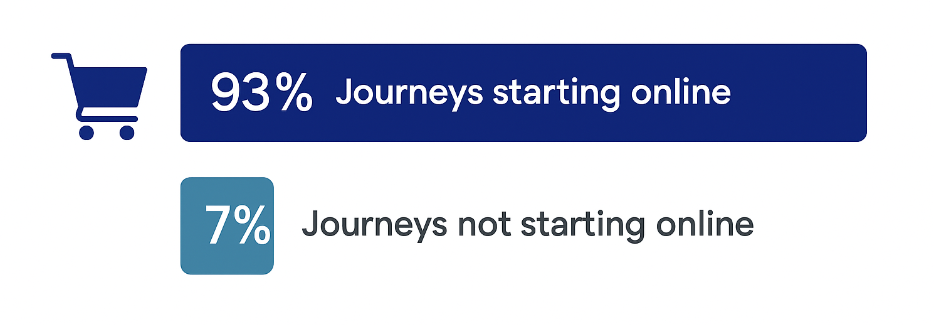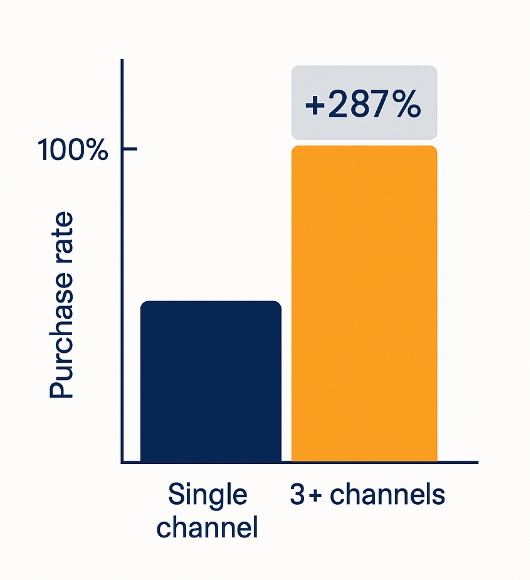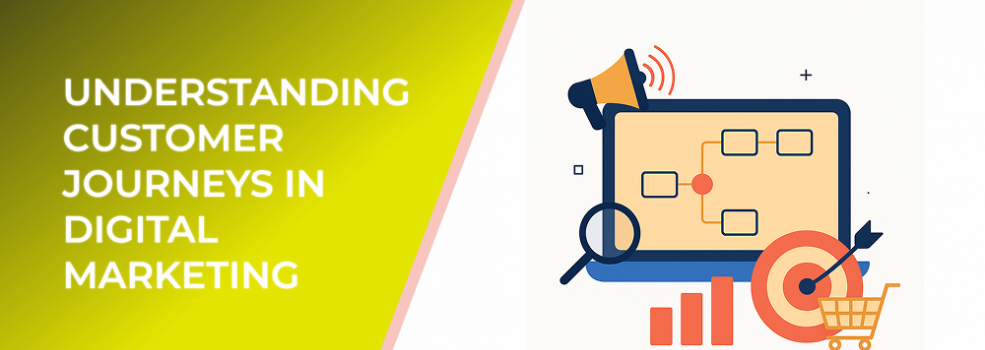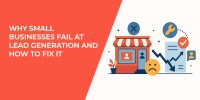This article breaks down each stage, shows how to analyze customer behavior, and helps you build personalized campaigns that drive real results.
What Is a Customer Journey?
A customer journey maps the path a potential buyer takes from the first interaction with your brand to the final purchase and beyond. It includes all the touchpoints—ads, emails, social posts, and website visits—that shape how users perceive and engage with your business.
In today’s digital ecosystem, where customers switch between multiple platforms before making a decision, understanding their journey is critical. According to Salesforce, 80% of customers say the experience a company provides is as important as its products or services. This makes the journey itself a key part of your brand’s value.
Key Stages of the Customer Journey

Nearly 9 in 10 shopping journeys now begin online — emphasising the critical role of digital touchpoints
-
Awareness
The stage where potential customers first discover your brand through ads, content, or word-of-mouth. Research shows that 63% of shopping journeys begin online, even if the purchase happens offline. -
Consideration
Prospects evaluate different options and compare you with competitors. Engaging content and retargeting ads play a crucial role here—for instance, brands that use personalized retargeting see up to 10× higher click-through rates than generic campaigns. -
Conversion
The decision point—when a lead becomes a customer. A seamless checkout or onboarding experience can significantly increase success rates. One study found that reducing friction in the checkout process can boost conversions by 35%. -
Retention
Post-purchase engagement builds loyalty. Returning customers are 5 times more likely to repurchase and spend 67% more than new ones. Nurturing this stage through targeted email sequences or loyalty programs strengthens lifetime value. -
Advocacy
Satisfied customers become brand advocates who share their experiences. Leveraging social proof and referral programs can amplify your reach at a fraction of the cost of paid ads.
Mapping and Optimizing the Journey

Integrating three or more channels boosts purchase rates by almost threefold compared to single-channel campaigns
To effectively map your customer journey:
-
Collect data across all channels—social, email, ads, and on-site behavior.
-
Use analytics to identify where users drop off and which paths lead to conversion.
-
Segment audiences based on behaviors and lifecycle stage.
-
Personalize experiences using automation tools like lookalike audiences and dynamic ads.
Why Understanding Customer Journeys Matters
When you understand the customer journey, you can:
-
Allocate budgets to high-performing touchpoints.
-
Deliver consistent brand experiences across channels.
-
Predict customer needs and behaviors with greater accuracy.
According to Google, 90% of users switch between devices during their journey, meaning that cohesive cross-channel targeting can dramatically enhance results. Companies that master this holistic view often achieve 30% higher marketing ROI.
Suggested Next Reads
If you found this article useful, you may also enjoy:
Final Thoughts
Mastering the customer journey isn’t about tracking every click—it’s about understanding intent, removing friction, and creating meaningful connections. When your marketing strategy aligns with how real people make decisions, you don’t just convert customers—you build lasting relationships that fuel long-term growth.

